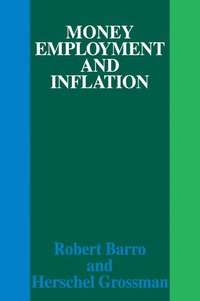
Fler böcker inom
- Format
- Häftad (Paperback)
- Språk
- Engelska
- Antal sidor
- 280
- Utgivningsdatum
- 2008-07-01
- Förlag
- Cambridge University Press
- Medarbetare
- Grossman, Herschel I.
- Illustratör/Fotograf
- Illustrations
- Illustrationer
- Illustrations
- Dimensioner
- 229 x 152 x 16 mm
- Vikt
- Antal komponenter
- 1
- Komponenter
- 2:B&W 6 x 9 in or 229 x 152 mm Perfect Bound on Creme w/Gloss Lam
- ISBN
- 9780521068659
- 413 g
Money Employment and Inflation
528
- Skickas från oss inom 7-10 vardagar.
- Fri frakt över 249 kr för privatkunder i Sverige.
Passar bra ihop
De som köpt den här boken har ofta också köpt Slow Productivity av Cal Newport (häftad).
Köp båda 2 för 727 krKundrecensioner
Har du läst boken?
Sätt ditt betyg »
Fler böcker av Robert J Barro
-
The Wealth of Religions
Robert J Barro, Rachel M McCleary
-
Education Matters
Robert J Barro
-
Economic Growth
Robert J Barro, Xavier I Sala-I-Martin
-
Determinants of Economic Growth
Robert J Barro
Innehållsförteckning
1. The basic model; 2. Output and employment under non market-clearing conditions; 3. Capital, financial assets and the rate of return; 4. Inflation and the rates of return; 5. Inflation and unemployment; 6. The dynamics of aggregate demand; 7. Output and employment with wage and price speculation.
Du kanske gillar
-
48 Laws of Power
R Greene
HäftadTransformed
Marty Cagan
Inbunden


